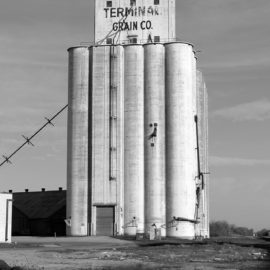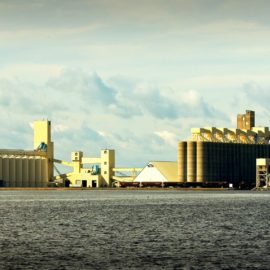
Those against the grain elevator just got a boost!
A year-and-a-half long effort to stop a new grain elevator from being built in Wallace has gained the support of the National Urban League, whose president, Marc Morial, called the project “ill-advised” in a recent letter to project investors. Morial, a former New Orleans mayor, also voiced his opposition at a panel he led last week with Descendants Project co-founder Joy Banner at the Whitney Plantation Museum, which will be adjacent to the elevator if it is built. In his June 3 letter to Engine No. 1, the San Francisco-based group that is financing the project, Morial said the elevator would negatively impact the Whitney museum, the only state site to honor the enslaved Africans who built the sugarcane and indigo empire that loomed large in Louisiana before the American Civil War. “Your plans reflect insensitivity to this historic, treasured and sacred site of an essential element of African American history,” Morial wrote.
nola.com
Whitney Plantation visitors bring in more than the elevator would.
At Wednesday’s panel discussion, Morial added that the economic impact of the plantation – which saw 110,000 visitors in 2019 – far exceeds that of the proposed grain elevator, which expects to employ 100 people. The Urban League, the nation’s largest civil rights and advocacy organization, is just the latest national group to decry the grain elevator project. The National Trust for Historic Preservation and the Advisory Council on Historic Preservation have each said the elevator could have a harmful effect on the historic Whitney and Evergreen plantations, and that the Army Corps of Engineers should deny its permit. Meanwhile, the Wallace-based Descendants nonprofit has been fighting for more than a year to block the project, arguing in a lawsuit last year that dust and other pollution from the completed elevator will harm neighboring communities and that even its construction could disturb the grave sites of former slaves who lived on the adjacent plantations.
The Decendents have been in court and rebuffed by a court so this is a good endorsement for their cause.
The Descendants also sued the Department of Natural Resources on June 24 after it waived a requirement for a coastal permit developers would have needed to build the elevator. 40th District Court Judge J. Sterling Snowdy on June 3 denied the Descendants’ push to stop the elevator’s construction while their lawsuit plays out, saying the Descendants failed to prove in court that burial sites would be harmed. Snowdy plans to rule on the group’s second lawsuit within weeks. At issue is a $500 million, 54 silo grain elevator terminal that developer Greenfield LLC of Colorado wants to build in Wallace. The terminal would hold up to 8 million metric tons of grain, and would be 275 ft. tall – almost the height of the Statue of Liberty. The Corps hasn’t yet approved Greenfield’s plans to operate the terminal.
Again, the grain elevator is being based on the economics of the proposed building.
Though Greenfield initially guaranteed that 60 new jobs would come from the project, they now say they will provide more than 100 new, permanent jobs with an average salary of $75,000. Another 500 construction jobs will benefit nearby communities. Greenfield also describes itself as a “community-first” organization, and says it has met with the residents of Wallace and those in surrounding communities. “One in five people is unemployed in this community. Greenfield is going to change that,” Greenfield Chief Operating Officer Cal Williams said in a statement. “We can help this community transition to a cleaner, more sustainable economy with family-sustaining jobs.” Greenfield officials have also said that they conducted surveys on the land proposed for the terminal, and are confident no burial sites are in that location. However, ProPublica reported in May that the researcher who did those surveys submitted an initial report which suggested there could be unmarked graves on the land. Greenfield later edited that report to remove those findings.
There is also the question of the amount of dust that would be created.
To address pollution concerns, Greenfield plans to enclose potential dust points to minimize the terminal’s emissions, Williams added. Greenfield has already been permitted to emit 37 tons of fine particulate matter every year at the terminal’s site. Such matter can be inhaled deep into the lungs and enter the bloodstream, where it can cause respiratory symptoms, decreased lung function and other problems, according to the Environmental Protection Agency. If approved, it would be just one of the dozens of industrial facilities that snake the Mississippi River between Baton Rouge and New Orleans, an area nicknamed “Cancer Alley” by environmental advocates due to its high amount of air pollution. Such facilities are typically built in predominately minority communities, Banner noted at the panel.
Morial notes the history of the land and his personal relationship to the land.
In his letter, Morial noted that the Whitney Plantation has special significance to African Americans generally and to his family specifically. Morial’s third-great grandfather, Victor Haydel, was born a slave in 1835 on Habitation Haydel, the site now known as the Whitney Plantation. He urged the project’s backers to abandon their plans, and repeated those sentiments at Wednesday’s panel. “(This is) the first time that a plantation has been converted to recognize the people who were enslaved on that plantation,” Morial told the audience. “We cannot allow this asset to be negatively impacted in any fashion, by any form of industrial development.”
Hopefully this endorsement will carry some weight.



